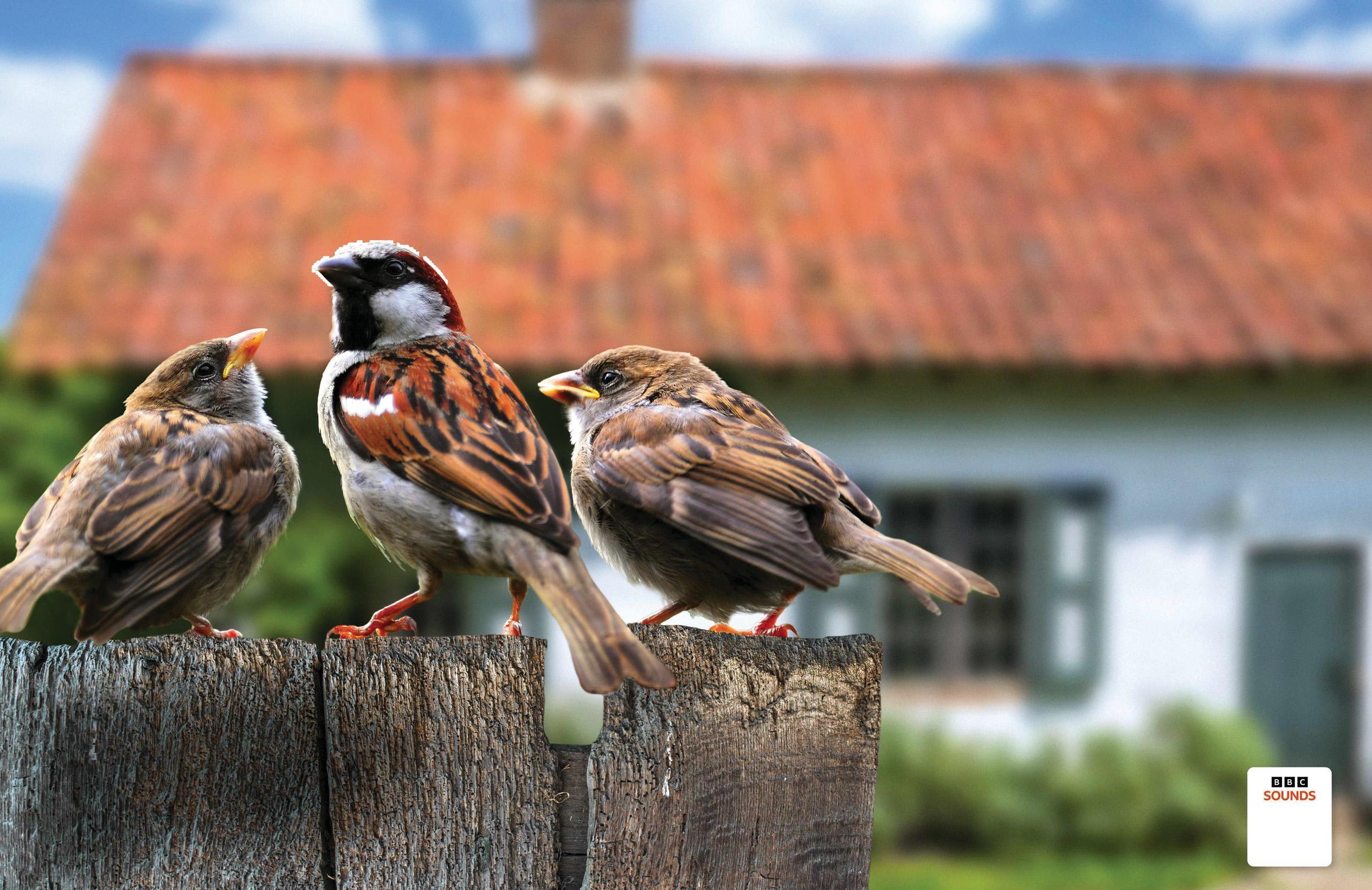Prøve GULL - Gratis
ROOM FOR A LITTLE ONE?
BBC Wildlife
|October 2022
The once ubiquitous house sparrow has suffered a drastic decline. It’s time to step in and lend our small and charming neighbours a helping hand.

THE CLATTER OF TRAFFIC IS PIERCED MOMENTARILY by the sound of my drill screaming into the brickwork. I'm halfway up a ladder clinging to the chimney of my local pub, the Red Lion (which is ironically painted green), surrounded by an expansive landscape of concrete, interspersed by the occasional fluffy green bush.
My assistant, Matthew, relays screws to me with an outstretched arm. He has offered his assistance in return for a supermarket meal deal.
It’s August 2021 and we’re installing birdboxes around Portsmouth in the warmth of a golden sun. This is the seventh of the day. Four are already in place on the pub’s exterior and, earlier this morning, two went up on the walls of an antique furniture shop. Bar the boisterous gangs of gulls, there’s only one bird around, and it’s the very species we’re trying to create a home for: the humble house sparrow.
House sparrows, you see, need our help. They may be regarded as common brown birds, yet these characterful little passerines are struggling. We still don’t know exactly why, but in urban areas, it’s likely the result of air pollution attacking their delicate lungs; a catastrophic decline in their invertebrate prey; disease, including avian malaria; and the loss of the older buildings – complete with loose tiles, crooked eaves and other nooks and crannies – in which they nest.
Between 1966 and 2016, we lost a staggering 21.7 million of them, almost one per minute. The scenes of urban hedges fat with chestnut bodies and parks loud with evocative squabbles are now a distant memory. Hyde Park was once thronged with hundreds of sparrows but, like many other parts of the capital, has fallen silent.
Denne historien er fra October 2022-utgaven av BBC Wildlife.
Abonner på Magzter GOLD for å få tilgang til tusenvis av kuraterte premiumhistorier og over 9000 magasiner og aviser.
Allerede abonnent? Logg på
FLERE HISTORIER FRA BBC Wildlife

BBC Wildlife
SNAP-CHAT
Isaac Szabo talks hellbenders, chub nests and bears on the roof
3 mins
December 2025

BBC Wildlife
Why are the tropics so diverse?
AS YOU MOVE FROM THE POLES towards the equator, species richness increases.
1 mins
December 2025

BBC Wildlife
Magnificent frigatebird
ONE MIGHT BE FORGIVEN FOR thinking that pterodactyls had been de-extincted upon first sighting the silhouette of a magnificent frigatebird.
3 mins
December 2025

BBC Wildlife
YEAR OF THE CAT
Once a phantom of Chile's windswept peaks, this plucky feline is making a comeback
3 mins
December 2025

BBC Wildlife
KATE BRADBURY
“I feel I am part bird at this point at the year's end: I'm ready for spring”
2 mins
December 2025

BBC Wildlife
SNOW DAYS
High in the boreal forests of Colorado, the snowshoe hare lives a secretive life. But one photographer has gained a unique window into its world
3 mins
December 2025

BBC Wildlife
A journey into sound
Progressive hearing loss prompted a memorable quest to absorb nature's calls and choruses
7 mins
December 2025

BBC Wildlife
WILD IN THE CITY
A huge parliament of long-eared owls has made an unlikely home in a Serbian town square
2 mins
December 2025

BBC Wildlife
Birds follow the flames
In the Sierra Nevada of California, fire gives some birds a boost
1 mins
December 2025

BBC Wildlife
Remembering Jane
The ethologist, conservationist and humanitarian Dr Jane Goodall died in October. We reflect on the woman who gave the world hope
5 mins
December 2025
Translate
Change font size
